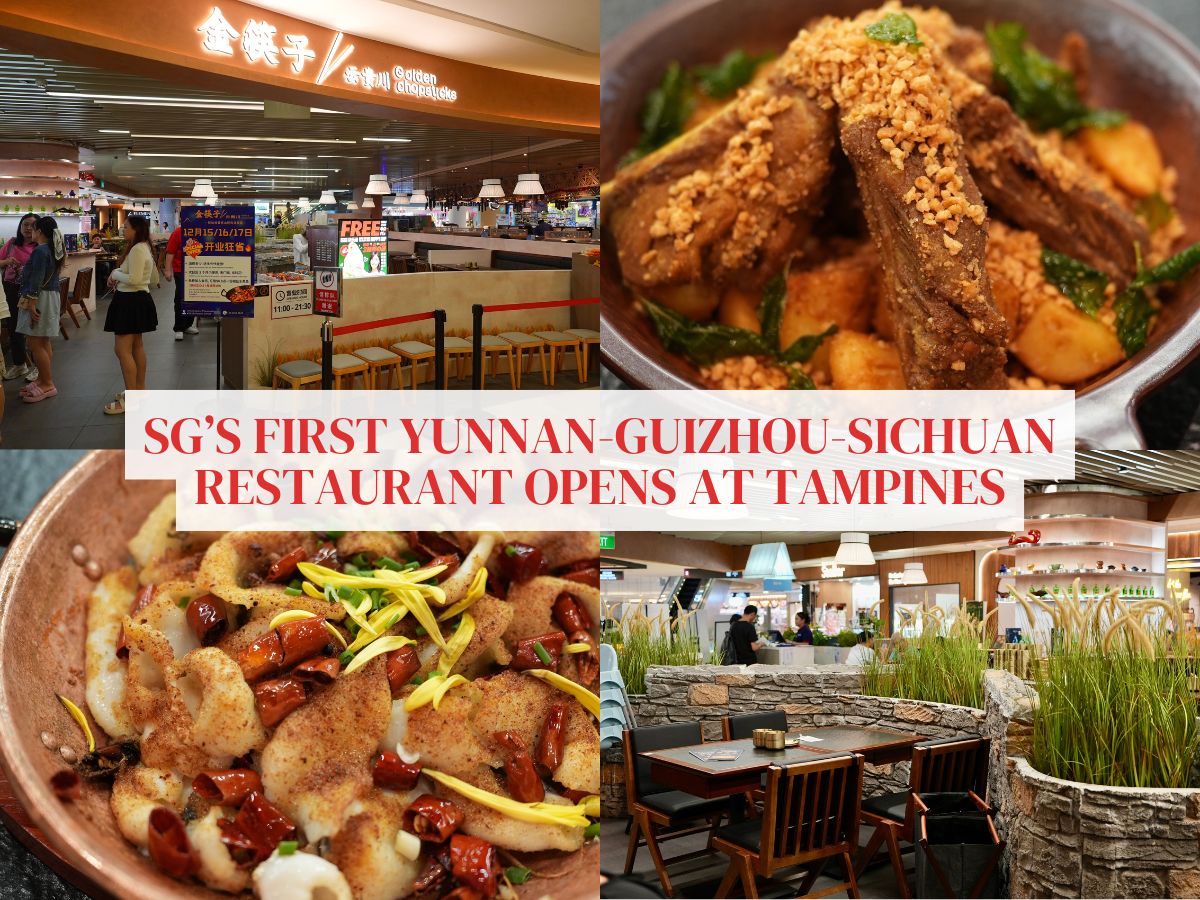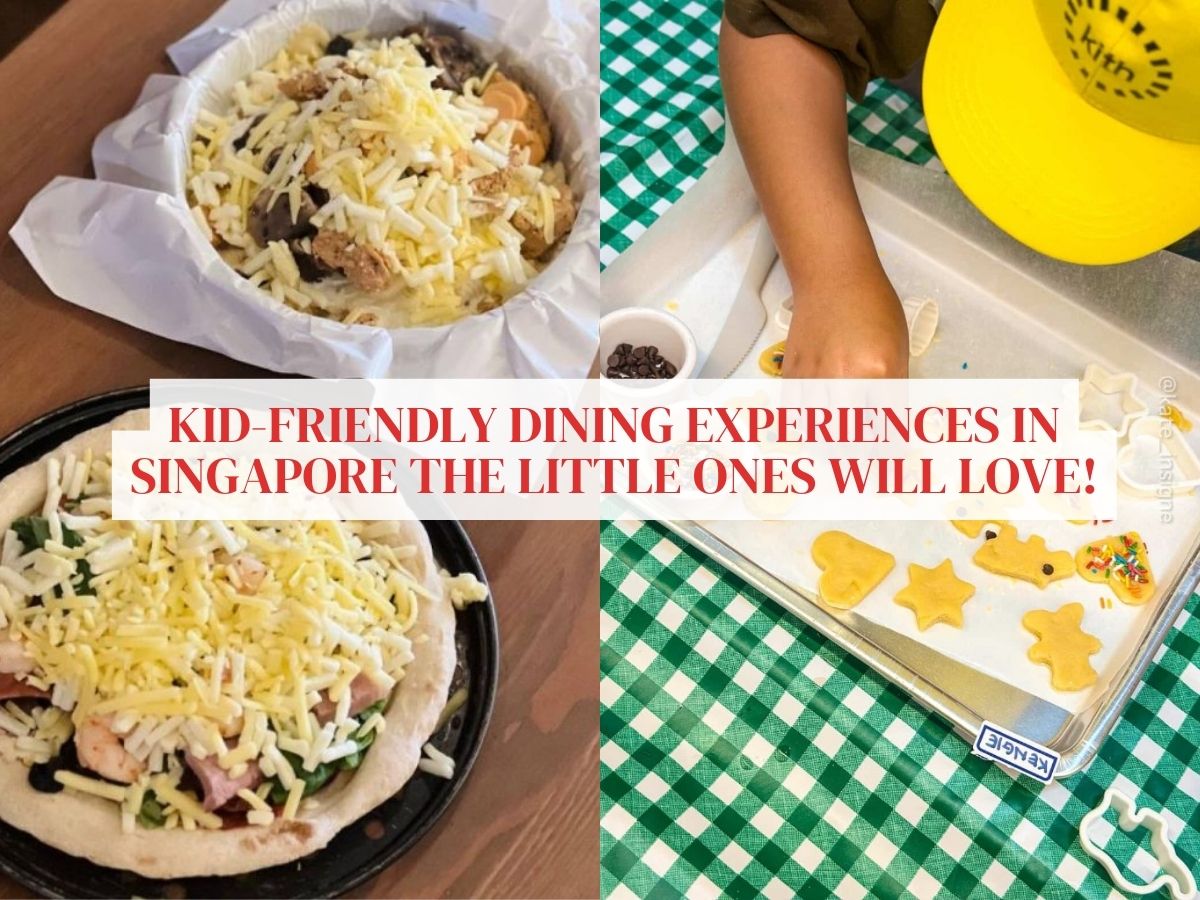How Peko Peko founder Desiree Wong is bringing slow-cooked Japanese soul food to the CBD
- After running a home-based food business in Melbourne, Desiree returned to Singapore to launch Peko Peko — a Japanese-inspired stew and grain bowl brand.
- Known for its comforting stew sets, such as its 8-hour kakuni pork belly, Peko Peko now serves CBD crowds at Marina One with a new customisable takeaway concept.
- The brand is rooted in slow cooking, community, and a clear purpose: To make wholesome food exciting, fast and full of heart.
Peko Peko may mean “I’m hungry” in Japanese, but to its founder Desiree Wong, 35, it means so much more. It’s a heartfelt invitation to experience nourishing, slow-cooked food in a fast-paced world.
The Japanese-inspired grain bowl brand has quickly sparked interest for its hearty, tasty stews. Its latest outlet, which opened at Marina One in December 2024, brings these comforting flavours to the CBD.
Peko Peko’s journey began with its first outlet at Telok Kurau, in March 2024. The cosy stall introduced neighbourhood diners to hearty Japanese-style stew sets, such as the 8-hour kakuni (braised) pork belly (S$9.90) and Japanese tomato chicken (S$8.90).
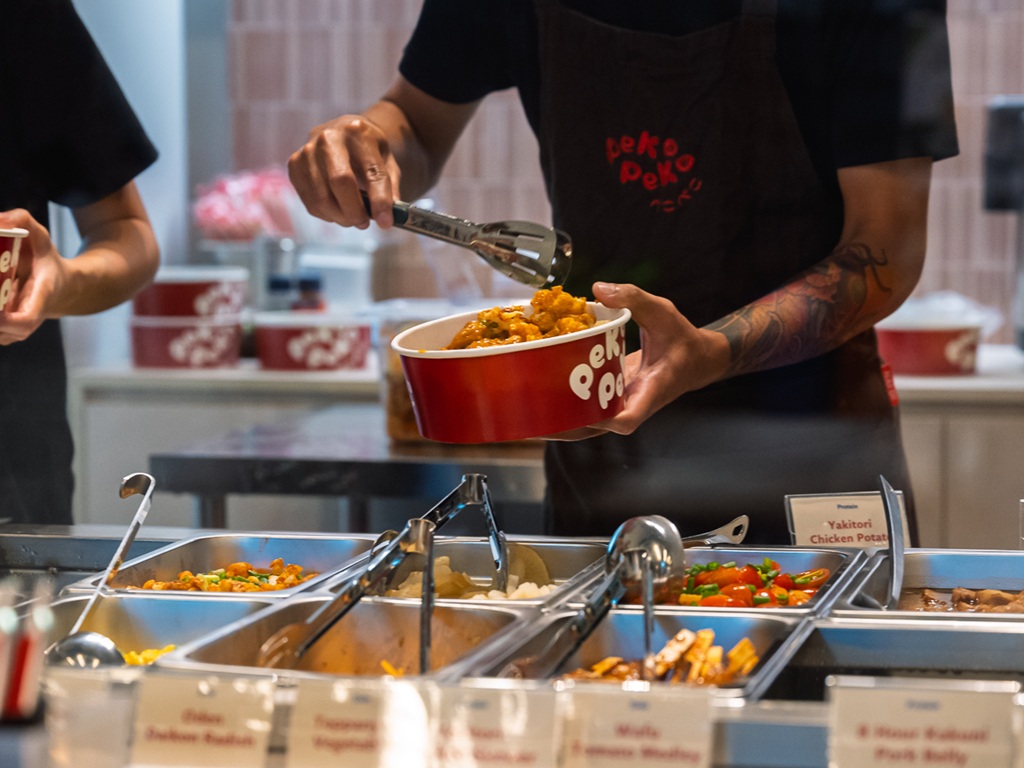
At its new Marina One outlet, the concept is a little different. The menu is fully customisable so that customers can easily mix-and-match according to what they feel like eating. It’s a build-your-own-bowl format where diners select a carb base, a protein and sides, but Peko Peko’s menu highlights remain constant.
Starting out in Melbourne
Desiree’s F&B journey started in a small Melbourne kitchen. Armed with a love for fresh produce and a desire to feed her community, Desiree began cooking grain bowls out of her home, while studying in Australia. That humble home-based business eventually blossomed into a full-fledged food concept with multiple outlets and a loyal following.
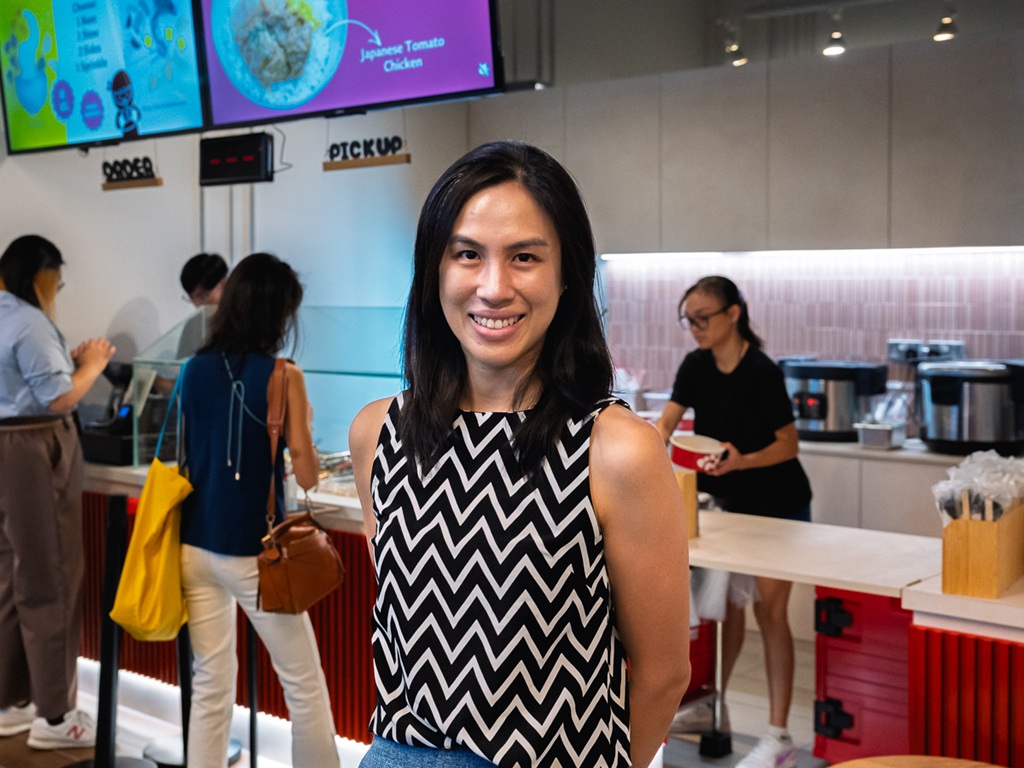
Later, she sold off the business and joined OMI Group, one of Australia’s fastest-growing Japanese fusion brands. There, she honed her skills in concept development, team management and the nuts and bolts of operations.
“My past F&B experience showed me what I value — building a brand rooted in genuine relationships and purposeful creation,” Desiree recalls.”I realised that beyond good food, it’s the people and sense of community that make a business truly meaningful.”
She adds: “Along the way, I also discovered my love for the creative process — bringing a brand, dishes and spaces to life, from scratch.”
In 2020, Desiree made the decision to return to Singapore. There wasn’t a grand epiphany, but a quiet realisation that it was time to plant roots, both personally and professionally.
“I wanted to build something grounded in everything I’d learned, but on my own terms,” she says. “It had to feel meaningful.”
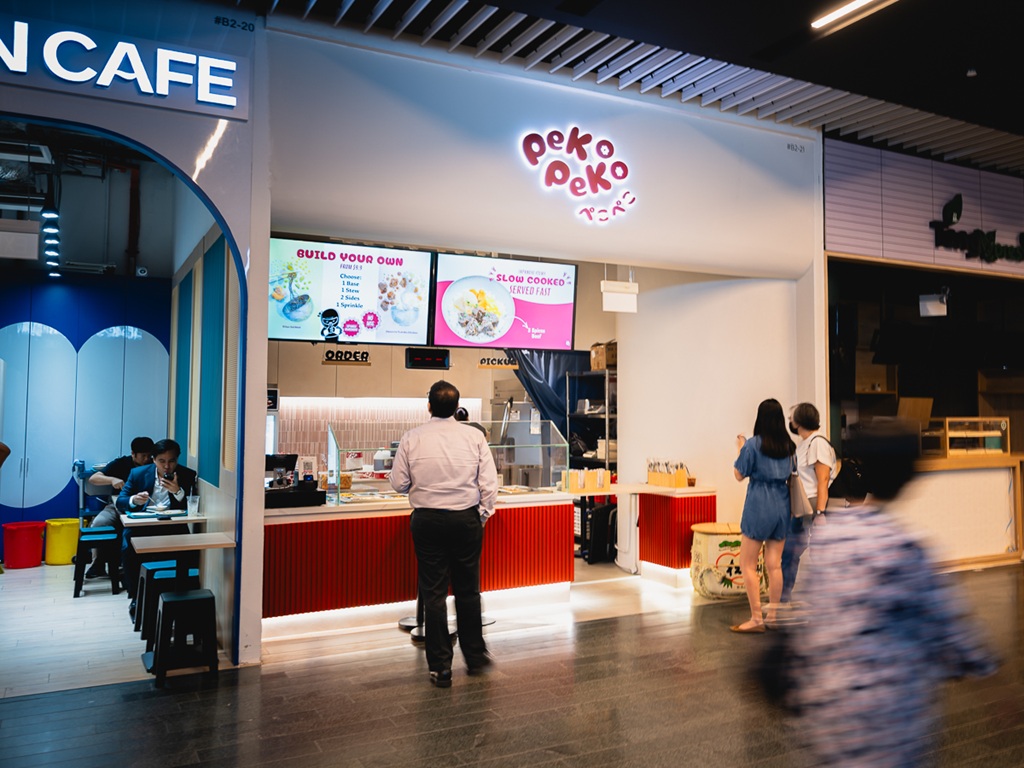
That spark led to the birth of Peko Peko — a modern comfort food concept with a Japanese soul, for a Singaporean crowd. The name, which is a common Japanese saying for when the hunger pangs have hit, reflects both the brand’s playful charm and its everyday accessibility.
Creating savoury stews
The mission at Peko Peko is simple: To fill hungry tummies by making good food choices easy and exciting. “We wanted to take the comfort and depth of slow-cooked food and make it accessible — served fast, without compromising on quality,” she says.
At the core of Peko Peko’s menu is slow-cooked Japanese-inspired stews served over nutritious grains. Each dish is designed to feel both comforting and balanced — flavour-forward, but never heavy.
Take the 8-hour kakuni pork belly for example. The braised pork is simmered slowly over low heat for hours to develop a rich depth of flavour and a melt-in-your-mouth tenderness.
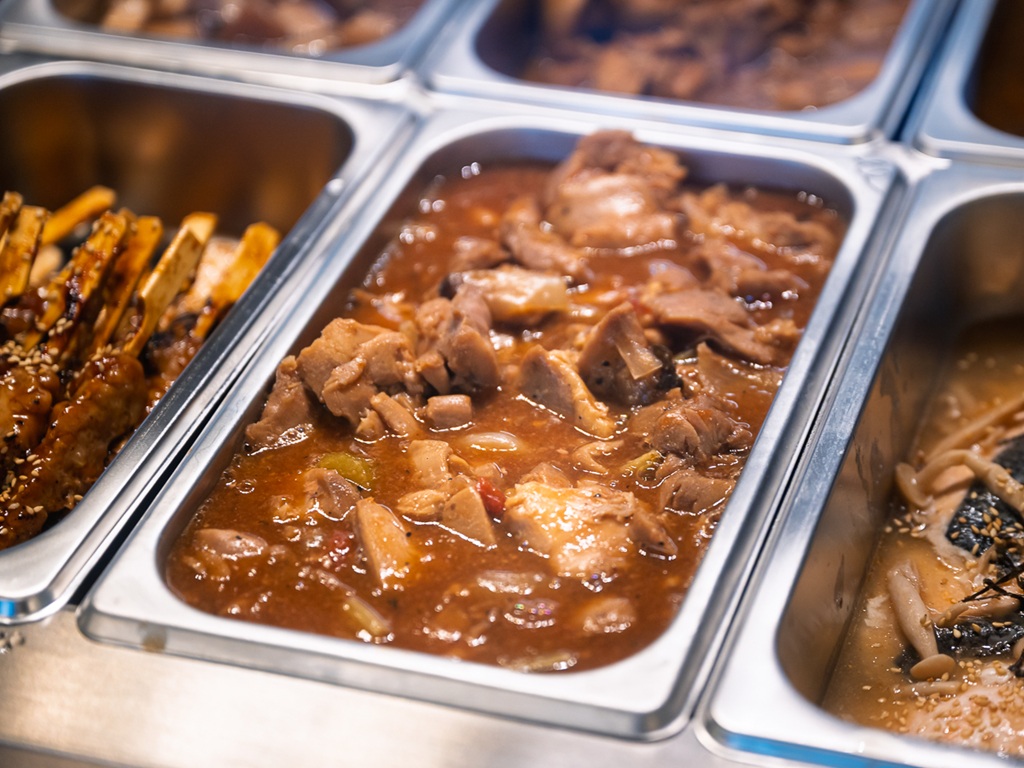
The R&D process for that dish was an iterative journey that involved testing variations of the recipe — adjusting the quantities of ingredients, experimenting with different cuts of meat and tweaking cooking times and temperatures.
“Then we did blind tastings with the team, family, friends and even a few loyal customers to select the version that the majority felt was best,” recalls Desiree. “This long, thoughtful process makes our pork belly stand out — it’s the culmination of time, care and collaboration.”

The Japanese tomato chicken is another popular selection. For this dish, Desiree aimed to combine the familiar comfort of a tomato-based stew, elevated with Japanese ingredients and an umami-rich broth. The result is a stew with a deep, savoury base, accented by the tangy brightness of tomatoes.
It’s a comforting dish with a little twist for those seeking something familiar and exciting.
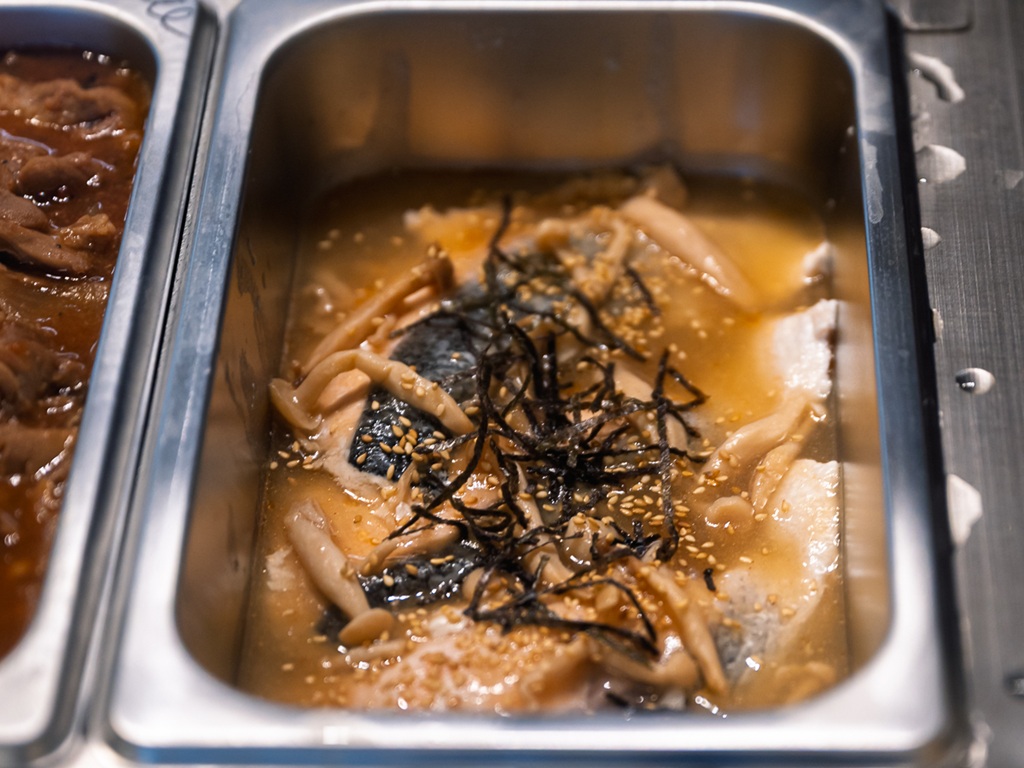
Meanwhile, the miso salmon offers a lighter alternative. It features ingredients such as mirin, sake, and dashi to create a balanced, flavourful gravy to stew the salmon in. “The outcome is a dish with layers of umami that still feels light and nourishing,” says Desiree.

Even the rice gets a thoughtful upgrade. Instead of plain white rice, Peko Peko’s bowls come with Japanese short-grain rice mixed with sakura denbu (fish-based topping).
What we tried

At Peko Peko, diners can choose from either a light (S$8.90), regular (S$10.90) or booster bowl (S$14.90). We ordered three regular bowls — each of them comes with a base — a choice of sakura ebi rice, sesame soba noodles or cauliflower rice — a yuzu slaw, two sides, and a protein.
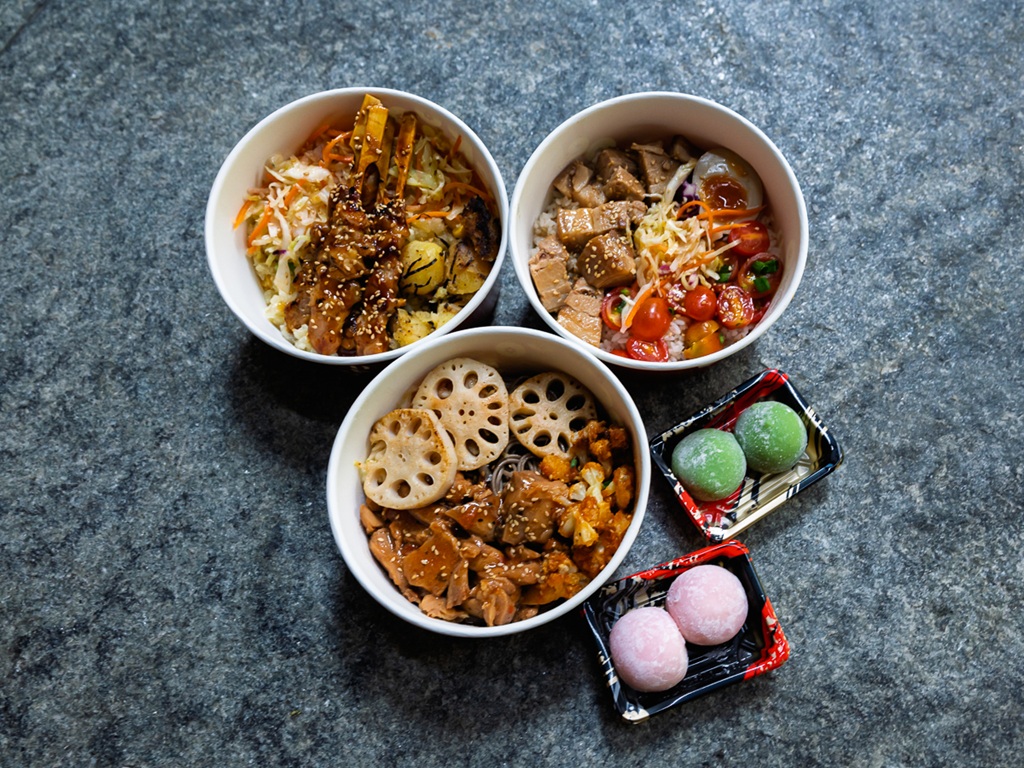
Our first bowl comprised sakura ebi rice and 8-hour kakuni pork belly, with wafu tomato and ajitsuke soft yolk egg as sides.
The pork belly was soft, succulent and rich without being greasy. The sauce and sides paired well with the rice, and I found the sakura rice had a subtle sweetness and an additional texture that you don’t quite get with plain rice.

For our second bowl, we tried sesame soba as a base, with Japanese tomato chicken. Our sides were dashi renkon lotus root and sweet & spicy cauliflower.
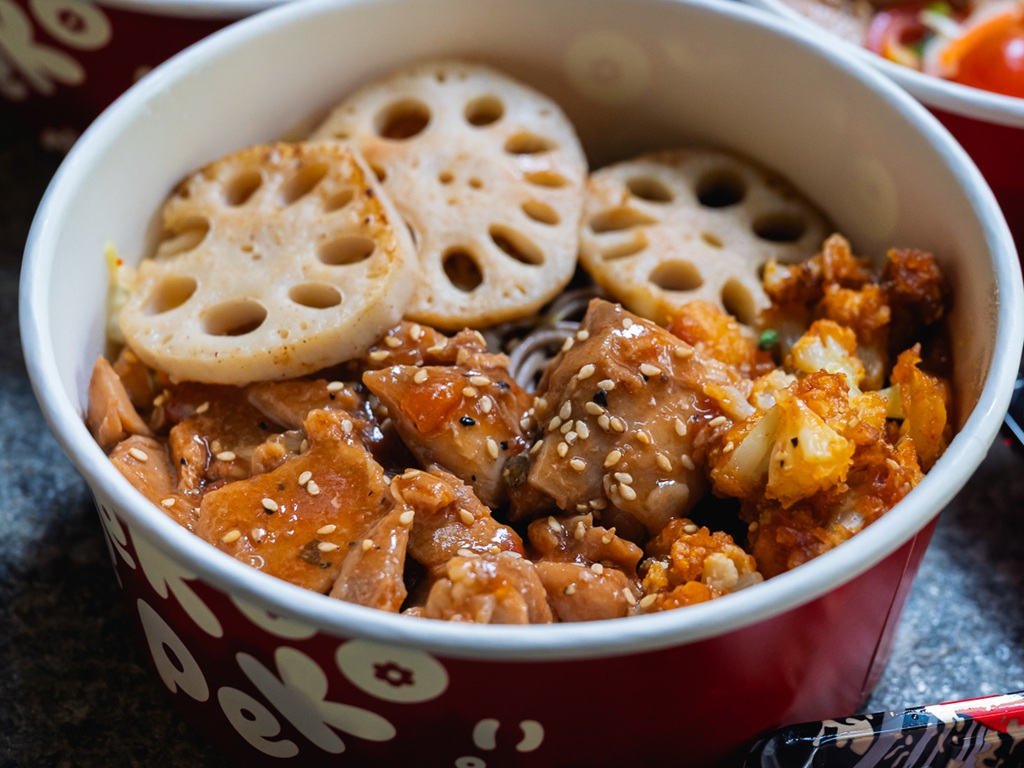
I found the Japanese tomato chicken to be a standout.
Think chicken stew meets Japanese hotpot — a little tang, a lot of umami and the kind of savoury warmth that stays with you. It’s the perfect choice for anyone craving something hearty, but not too heavy.
The dashi renkon lotus root was delicious as well, being both earthy and crunchy.
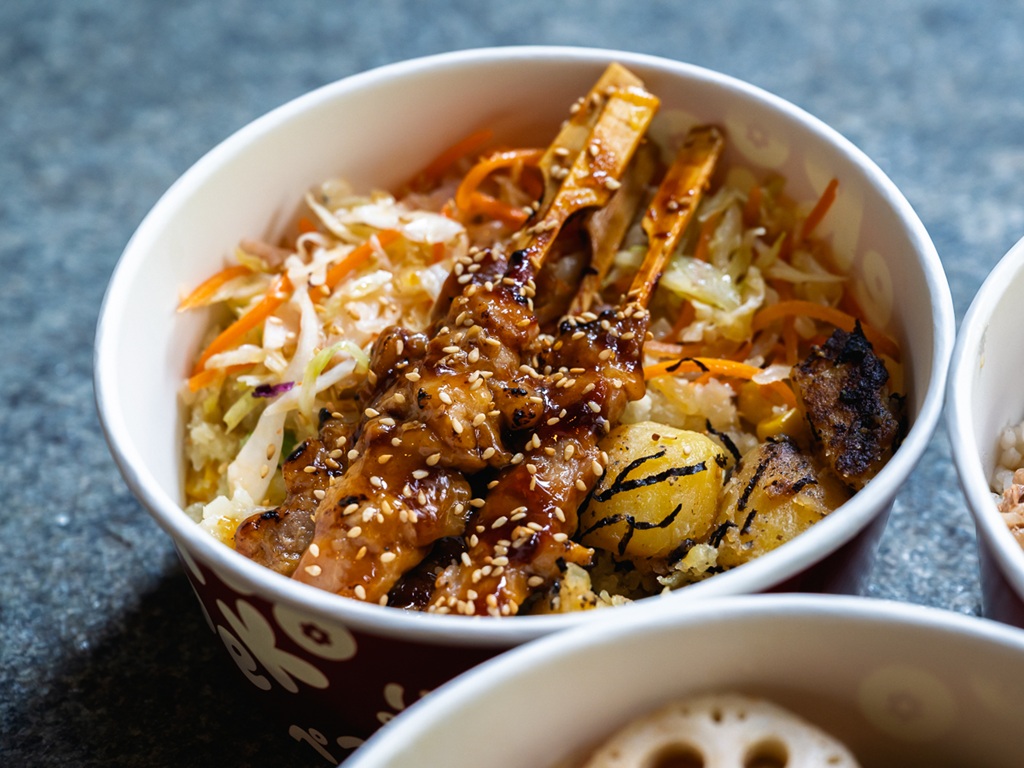
Finally, our third bowl consisted of cauliflower rice (extra S$1.50), with yakitori chicken skewers as the protein, and teppanyaki vegetables and nori seaweed potatoes to round out the bowl.
The tender yakitori chicken had a nice balance of sweet soy and subtle umami.
I also enjoyed the potatoes and how the nori seasoning gave it a tasty kick. If you’re on a diet, you’ll appreciate the cauliflower rice, a tasty no-carb option that still fuels you.
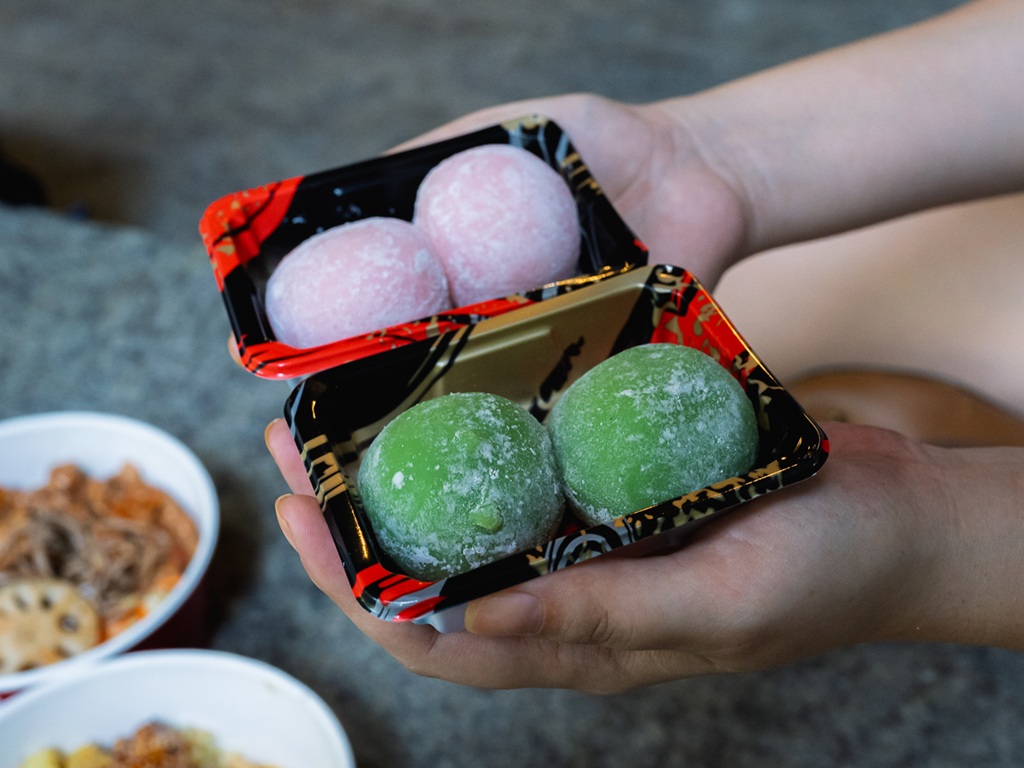
We ended off with momo peach and matcha azuki mochi (S$3 for two pieces) as desserts. My favourite was the peach mochi, filled with a subtle peach cream that’s light, fragrant and just sweet enough to satisfy.
A brand built on people
Desiree is quick to point out that Peko Peko isn’t just about food. It’s also about community — from suppliers and staff, to customers. This means fostering relationships that go beyond simple transactions.
“All our main suppliers have been with us since the beginning,” she says. “I communicate with my suppliers directly and explain what the brand is about. We view our suppliers as partners, with open communication, mutual respect and a shared commitment to quality.”
This people-first philosophy extends to her team, as well. “We believe in cultivating a positive, supportive work environment where everyone feels valued and empowered. When people enjoy working together, it naturally shines through in the food and the service we offer,” she adds.
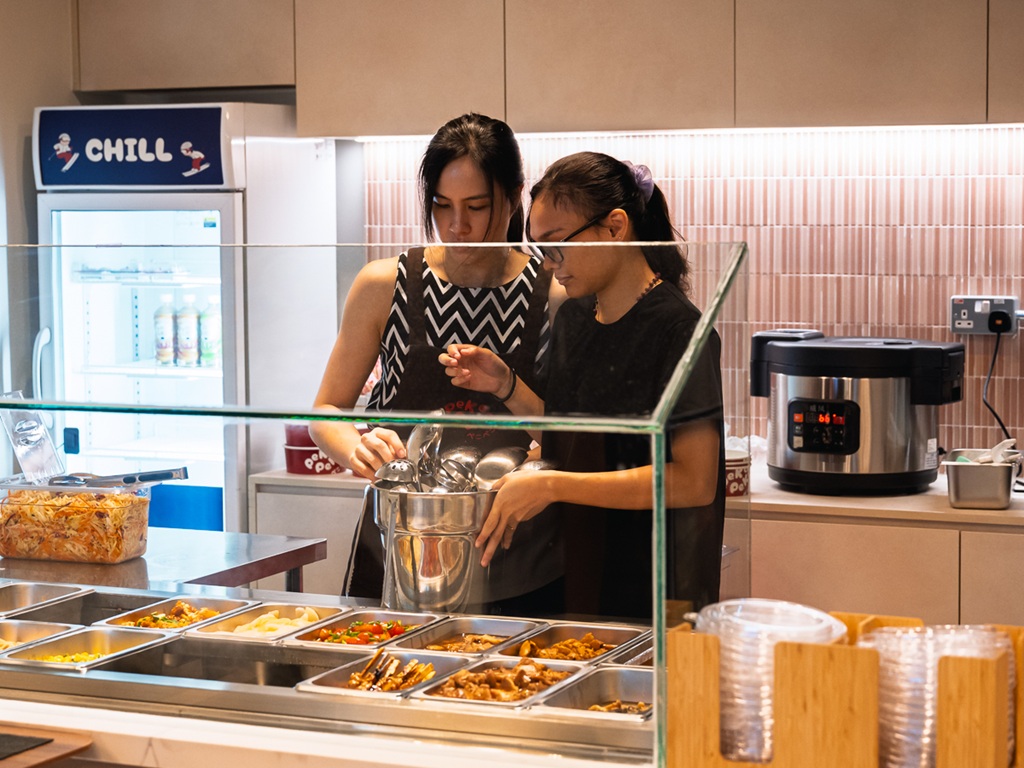
She also makes it a point to personally conduct taste tests for menu items and even solicits feedback from diners. “For our customers, we ensure that the passion and dedication that goes into preparing a warm hearty stew is all taken care of, so they can simply come, enjoy and connect over food and conversation,” she says.
Looking ahead
What’s next for Peko Peko? More outlets, perhaps — but only with intention.
“The next step in our growth will likely involve expanding our presence with more outlets within the CBD, and from there, broadening our reach to bring meals to a wider audience,” says Desiree. “However, I don’t have a fixed timeline or rigid plan, and remain open to re-direction as opportunities evolve.”
For now, Desiree wants to keep strengthening the solid foundation that Peko Peko has built, which she deems essential for sustainable growth. This means delivering nourishing meals to more people, one bowl at a time.
“Ultimately, our focus will always be on building a community around good food, delivering quality, comfort and connection with every meal,” says Desiree.
For more ideas on what to eat, read our stories on the new pinchos menu at Spanish restaurant Pura Brasa and the 40-year-old recipe at Chongqing hotpot spot Shuai Jiang Jun.
- Marina One, B2-21, 5 Straits View
- 110 Telok Kurau Road
- Downtown, Shenton Way
- 110 Telok Kurau Road


